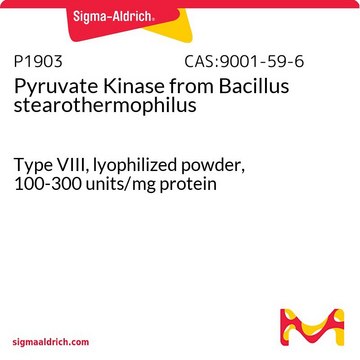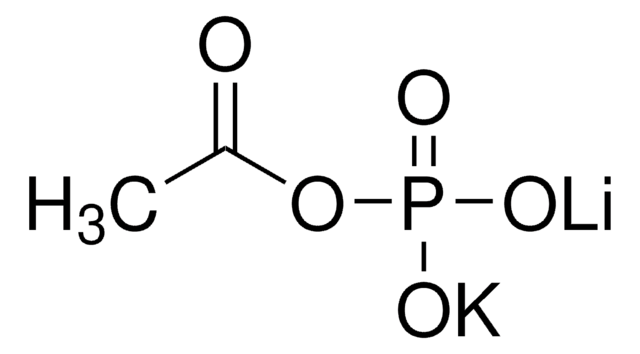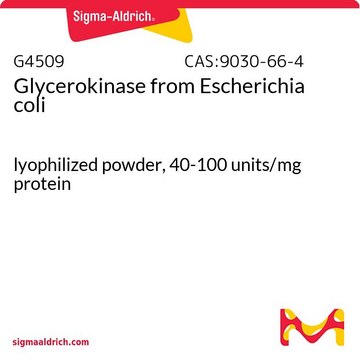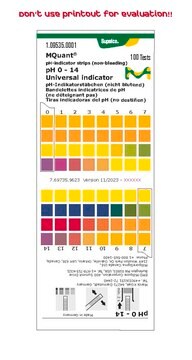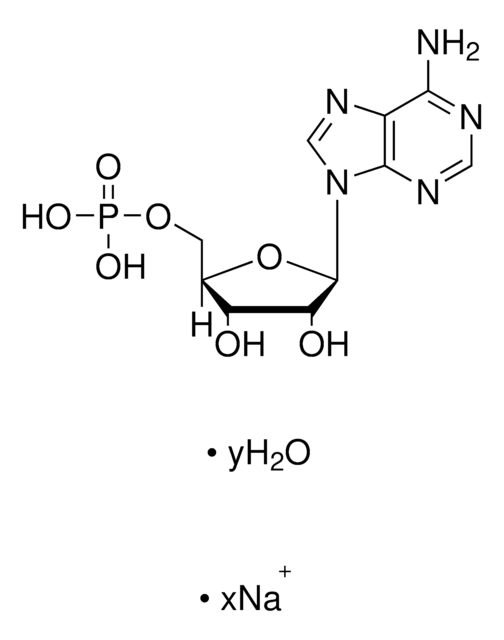A7437
Acetate Kinase from Escherichia coli
lyophilized powder, ≥150 units/mg protein (biuret)
Synonym(s):
ATP:Acetate phosphotransferase
Sign Into View Organizational & Contract Pricing
All Photos(1)
About This Item
CAS Number:
MDL number:
UNSPSC Code:
12352204
eCl@ss:
32160410
NACRES:
NA.54
Recommended Products
form
lyophilized powder
Quality Level
specific activity
≥150 units/mg protein (biuret)
composition
Protein, 5.0-20.0%
UniProt accession no.
foreign activity
adenosine triphosphatase and NADH oxidase ≤0.01%
storage temp.
−20°C
Gene Information
Escherichia coli K12 ... ackA(946775)
Looking for similar products? Visit Product Comparison Guide
General description
Acetate kinase belongs to acetate and sugar kinase/Hsc70/actin (ASKHA) structural superfamily. It exists as a dimer and has nucleotide binding site in the cleft between N and C-terminal domain.
Application
Acetate Kinase from Escherichia coli has been used in assessing acetate kinase activity during the fermatation process of Gluconacetobacter xylinus and in kinetic modeling and steady state studies.
Acetate kinase is used to phosphorylate acetate to acetyl phosphate. Acetate Kinase from Escherichia coli has been used as part of an ATP-regenerating system to study the kinetics of agonist-stimulated transphosphatidylation .
Biochem/physiol Actions
Acetate kinase plays an important role in glycolysis. Acetate kinase phosphorylates acetate in the presence of ATP and a divalent cation, which ultimately results in the production of acetyl-CoA . Acetate kinase is also involved in the metabolism of propanoate, pyruvate and taurine.
Involved in the metabolism of propanoate, pyruvate and taurine
Unit Definition
One unit will phosphorylate 1.0 μmole of acetate to acetyl phosphate per min at pH 7.6 at 25 °C.
Physical form
Lyophilized powder containing trehalose with small amounts of potassium phosphate, magnesium chloride, and dithiothreitol
Storage Class Code
11 - Combustible Solids
WGK
WGK 3
Flash Point(F)
Not applicable
Flash Point(C)
Not applicable
Choose from one of the most recent versions:
Already Own This Product?
Find documentation for the products that you have recently purchased in the Document Library.
Customers Also Viewed
Influence of residual ethanol concentration on the growth of Gluconacetobacter xylinus I 2281
Kornmann H, et al.
Applied Microbiology and Biotechnology, 62(2-3), 168-173 (2003)
Urkinase: structure of acetate kinase, a member of the ASKHA superfamily of phosphotransferases
Buss KA, et al.
Journal of Bacteriology, 183(2), 680-686 (2001)
S C Olson et al.
The Journal of biological chemistry, 266(26), 17236-17242 (1991-09-15)
Receptor-linked activation of phospholipase D has been demonstrated recently in a variety of intact cell types including granulocytes, but little is known about the enzyme, its cofactor requirements, and regulation. Using [3H]alkyllysophosphatidylcholine to prelable an endogenous phosphatidylcholine substrate pool in
F J Grundy et al.
Journal of bacteriology, 175(22), 7348-7355 (1993-11-01)
The Bacillus subtilis gene encoding acetate kinase was identified on the basis of sequence similarity to the Escherichia coli ackA gene and to a second E. coli gene closely related to ackA. Insertional inactivation of this region of the B.
Hélène Scornec et al.
Frontiers in microbiology, 11, 156-156 (2020-03-21)
The cell surface is the primary recognition site between the bacterium and the host. An operon of three genes, LSEI_0219 (cwaR), LSEI_0220 (cwaS), and LSEI_0221 (ldcA), has been previously identified as required for the establishment of Lactobacillus paracasei in the
Our team of scientists has experience in all areas of research including Life Science, Material Science, Chemical Synthesis, Chromatography, Analytical and many others.
Contact Technical Service

